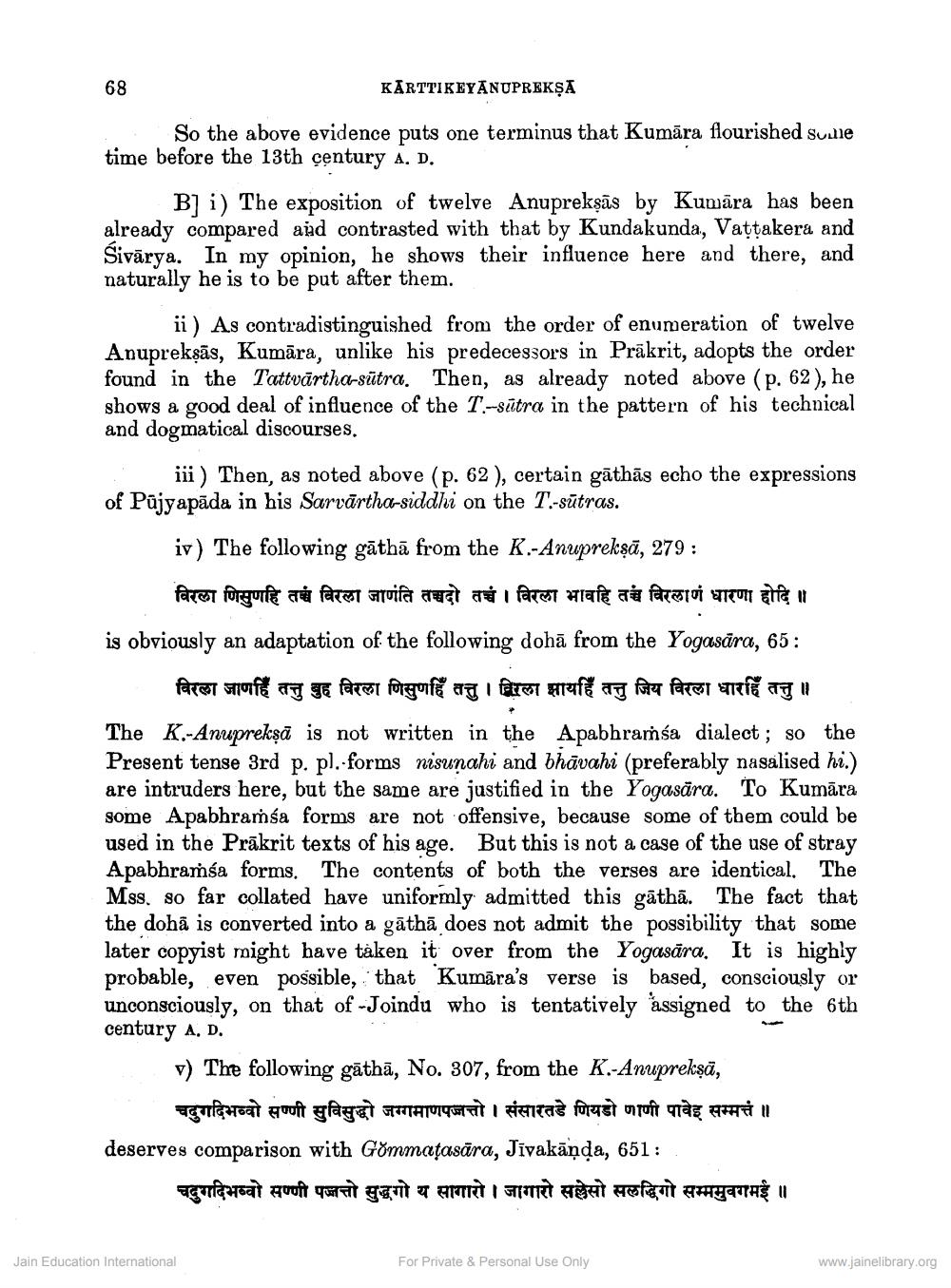________________
KARTTIKEYANUPREKṢA
So the above evidence puts one terminus that Kumāra flourished some time before the 13th century A. D.
68
B] i) The exposition of twelve Anuprekṣās by Kumara has been already compared and contrasted with that by Kundakunda, Vaṭṭakera and Sivarya. In my opinion, he shows their influence here and there, and naturally he is to be put after them.
ii) As contradistinguished from the order of enumeration of twelve Anuprekṣas, Kumāra, unlike his predecessors in Prakrit, adopts the order found in the Tattvartha-sutra. Then, as already noted above (p. 62), he shows a good deal of influence of the T-sutra in the pattern of his technical and dogmatical discourses.
iii) Then, as noted above (p. 62), certain gathās echo the expressions of Pujyapada in his Sarvartha-siddhi on the T.-sutras.
iv) The following gatha from the K.-Anuprekṣā, 279:
facer forguilé að fazem arvifa augt að | facon waft aá fazzjoi ancon la u
is obviously an adaptation of the following doha from the Yogasāra, 65: facer mufé ag ge farmı figufé ag | fxon auft ag fra facer aniž ag ||
The K.-Anuprekṣa is not written in the Apabhramsa dialect; so the Present tense 3rd p. pl. forms nisunahi and bhavahi (preferably nasalised hi.) are intruders here, but the same are justified in the Yogasara. To Kumara some Apabhramsa forms are not offensive, because some of them could be used in the Prakrit texts of his age. But this is not a case of the use of stray Apabhramsa forms. The contents of both the verses are identical. The Mss. so far collated have uniformly admitted this gatha. The fact that the doha is converted into a gāthā does not admit the possibility that some later copyist might have taken it over from the Yogasara. It is highly probable, even possible, that Kumara's verse is based, consciously or unconsciously, on that of -Joindu who is tentatively assigned to the 6th century A. D.
Supe
v) The following gāthā, No. 307, from the K.-Anuprekṣā, चदुगभिव्वो सण्णी सुविसुद्धो जग्गमाणपज्जन्तो । संसारतडे पियडो णाणी पावेइ सम्मतं ॥ deserves comparison with Gommaṭasāra, Jīvakāṇḍa, 651:
चदुर्गादिभव्वो सण्णी पज्जन्तो सुद्धगो य सागारो । जागारो सल्लेसो सलद्धिगो सम्ममुवगमई ॥
Jain Education International
For Private & Personal Use Only
www.jainelibrary.org




